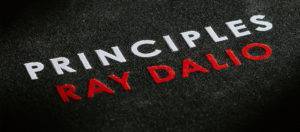In this guide, we will share the unique aspects of the sales process for an early-stage startup based on our experience as startup founders.
Being a good salesperson is a prerequisite for being a successful startup founder. While doing sales is uncomfortable for a lot of people, the truth is that if you are trying to bring something new into the world you need to be able to get people onboard – clients, investors, co-founders, early employees.
That said, as a startup founder you definitely don’t have to be the “always-be-closing” “take-your-money-at-all-cost” salesperson that everybody is allergic to. As an early-stage startup founder, making money is only half of your job. The other half is understanding the difficulties and problems of your potential clients as best as you can because you are in search of product-market fit.
Table of Contents:
1. Why is early-stage startup sales unique?
The simple reason is that during the discovery and validation phases, the goal of your startup isn’t to grow its revenue but rather to find a good product-market fit.
While the two aren’t mutually exclusive, PMF needs to come before revenue growth. If you try to grow without PMF, your growth wouldn’t be sustainable. It’s possible to convince people to buy on the back of your great sales skills. Yet, they are unlikely to have a good experience and to advocate for your product and brand. Your retention rate would be low, and you wouldn’t be able to kick-start an organic growth process.
This is why in the early stages your number one priority isn’t to close the sale but to figure out the real problem of the person you’re trying to sell to and what your offering needs to be so that people are excited to hear about your offering rather than annoyed.
Put differently, initially, you’ll feel like you are pushing your offering onto people. Your goal is to figure out how to adjust the variables (offering and target customers) so that you start feeling a pull from the market – your offering solves a pain point, so people are eager to get on board.
2. Start selling from stage zero
One of the biggest mistakes you can make as a startup founder is to start selling too late. Building behind closed doors increases the chance that you’ll build something nobody needs, and this is by far the biggest reason for failed early-stage startups.
In order to avoid this, you need to get in contact with your customers as early as possible. Arguably the best way to make certain you are on the right track is to try to make pre-sales before you even start building.
The typical steps are the following:
1. Define your offering and test it by contacting directly a few people (that you think are your target market) and telling them about it.
2. If the feedback is positive, make a wireframe prototype and a landing page, ideally with an explainer video (made on the prototype).
3. Make a pre-purchase button with a hefty discount.
4. Try to make pre-sales offline and online.
If nobody is willing to buy your product even at a significant pre-sale discount and personal attention from you, then it is unlikely they would buy even if the product is ready. By making this discovery before starting to build, you’ve saved yourself a lot of time and money.
3. Be creative about incentivizing a purchase
Naturally, if you start selling before you start building (or with an incomplete prototype) some people would be reluctant to commit to a purchase and would prefer to wait until the product is ready and until other people have tested it.
While this will inevitably be true, this shouldn’t discourage you from making sales from early on. While there would always be people like that, there are also early adopters who love to be the first to get a new product if it would give them an edge in one way or another (or simply because they enjoy new projects). In order to draw these people, you need to consider how best to incentivize them.
A hefty discount is always a good idea considering they would have to wait to get what they are paying for, but you can also employ other creative strategies.
For example, you can create the feeling of scarcity by offering a limited amount of pre-purchases. This tactic is becoming more and more popular for startups nowadays – a good example Clubhouse, Superhuman, and Hey.com .
The invite-only pre-purchase strategy creates a win-win situation: It would incentivize the early adopters to make the jump, but it would also limit the number of refunds you would have to do in case everything goes south for one reason or another. Moreover, having a manageable number of pre-purchase clients would let you get in touch with all of them personally and understand what they are looking for in the product.
Finally, keep in mind that direct access to the founder of the project and in-person support is also a perc you can offer to your early adopters. This is also a win-win situation since you need to keep in touch with them anyway in order to get invaluable customer feedback.
4. Adjust your offering
That’s the greatest benefit of pre-sales – you can adjust your offering easily and cheaply. You should definitely experiment with at least a couple of iterations until you find the combination that motivates people to commit.
This is not only true at the pre-sale stage. Even if your MVP is ready and working, there is still room to make iterations to improve your product-market fit.
And if you are simply not getting the desired traction – maybe the best move isn’t to continue grinding but rather to pivot with a completely new offering.
5. Adjust your target group
Your offering is just one-half of the PMF equation. The people you are selling to are also crucial.
You need to define your minimum viable segment (MVS) – a group of people that share the same problem and that could be reached in a similar manner. If you aren’t getting any traction with your sales attempts, then it is worthwhile to think of targeting another group of potential customers.
A good example is the animation note-taking startup RGB notes that were acquired in their early stage by Amazon. Initially, the founders were trying to sell to animation studios. After not having the desired success, they tried to approach university teachers and students that were learning animation – another group that could benefit from leaving feedback on videos. Finding better results with this new segment is one of the main steps that led them to a successful Amazon acquisition.
6. Know what metrics to track
Since the early-stage startup sales process is not all about revenue, it’s also important to keep track of other metrics.
First, these are usage metrics. Remember that the main reason you are getting people on board is to find PMF. The best way to see if you are on heading in the right direction rather than wasting your time and efforts as a founder is to measure the usage of your product at the same time as you are taking feedback from your customers. What features are getting used the most/least and why?
Second, can you track your net promoter score? Are your early adopters resulting in more inbound leads? If so, this is a great sign you are close to PMF. If not, then try to investigate why people aren’t willing to talk about your product.
7. Be open-minded about your pricing
Pricing an innovative product isn’t easy, as you rarely have an exact comparison to make on the market. This means that finding the best price for your offering is easiest to achieve
Peter Reinhardt, the founder of Segment.io, was forced by his newly-hired head of sales to ask a client for ~100X the price that segment was selling for at that time. While Peter was reluctant to try and skeptical he would succeed, the experiment resulted in him closing the deal for 20X the initial price. So, from the perspective of the customer, he got an 80% discount, and from the perspective of Peter, he get a 20X increase.
Obviously, Segment was severely under-pricing their offering. While such extreme examples are rare in the B2C world, in B2B the prices are much more varied and it’s important to experiment in order to empirically test the price elasticity of your offering.
8. Don’t neglect customers after you’ve made the sale
Last but certainly not least, don’t stop communicating with your customers after you’ve closed the deal. On the contrary, this is when you should start communicating even more actively, especially if you are still in the process of building.
This, however, is not only important in order to get good feedback. Working on customer retention is the most cost-effective way to impact your bottom line for the simple reason that marketing and sales are more expensive.
Moreover, by paying special attention to your first customers you increase the chance that they would feel more involved in the project and would be invested in its success. Converting your customers to brand advocates is crucial to kickstart the organic growth process.
9. In Summary
Startup sales aren’t all about prospects, leads, and closing deals. They are about understanding your customers better and fitting your offering to their needs. Sales is a crucial part of reaching product market fit, and in the early startup stages finding PMF is what ensures success.





